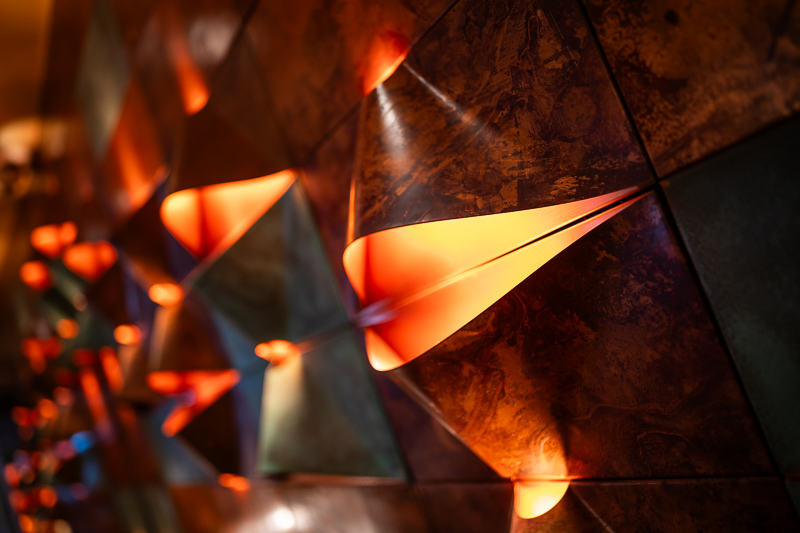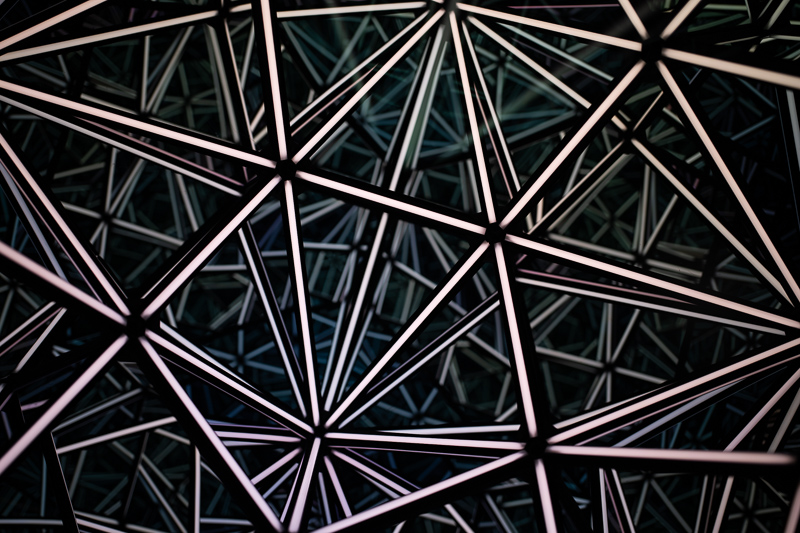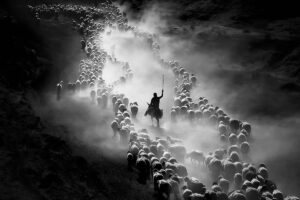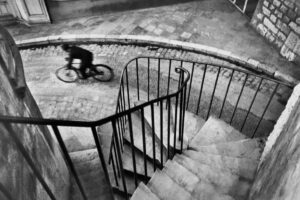Introduction
 Zeiss 28mm 1.4 Otus on Sony A7rII
Zeiss 28mm 1.4 Otus on Sony A7rIIAs third lens of the prestigious Otus lineup, in 2016 Zeiss released the Zeiss Otus 28mm 1.4 Apo Distagon. At that time it was the biggest, heaviest and most complex 28mm fullframe lens ever seen and it came with an eye watering price tag of $5.000, putting it far ouf of most people’s reach. On the used market you can now find this lens for less than half that – still a lot of money – is it worth saving up for this lens? Let’s try to find out!
Sample Images
 Nikon Zf | Zeiss 28mm 1.4 Otus | f/1.4
Nikon Zf | Zeiss 28mm 1.4 Otus | f/1.4 Sony A7III | Zeiss 28mm 1.4 Otus | f/1.4
Sony A7III | Zeiss 28mm 1.4 Otus | f/1.4 Nikon Zf | Zeiss 28mm 1.4 Otus | f/1.4
Nikon Zf | Zeiss 28mm 1.4 Otus | f/1.4 Nikon Zf | Zeiss 28mm 1.4 Otus | f/1.4
Nikon Zf | Zeiss 28mm 1.4 Otus | f/1.4 Sony A7III | Zeiss 28mm 1.4 Otus | f/1.4
Sony A7III | Zeiss 28mm 1.4 Otus | f/1.4 Nikon Zf | Zeiss 28mm 1.4 Otus | f/1.4
Nikon Zf | Zeiss 28mm 1.4 Otus | f/1.4 Sony A7III | Zeiss 28mm 1.4 Otus | f/1.4
Sony A7III | Zeiss 28mm 1.4 Otus | f/1.4 Sony A7III | Zeiss 28mm 1.4 Otus | f/8.0
Sony A7III | Zeiss 28mm 1.4 Otus | f/8.0 Nikon Zf | Zeiss 28mm 1.4 Otus | f/5.6
Nikon Zf | Zeiss 28mm 1.4 Otus | f/5.6 Sony A7III | Zeiss 28mm 1.4 Otus | f/8.0
Sony A7III | Zeiss 28mm 1.4 Otus | f/8.0You can find many of the sample images in full resolution here.
Specifications
The F-mount (ZF.2) version of this Zeiss Otus 28mm 1.4 Apo Distagon has the following specifications:
buy from amazon.com | amazon.de | B&H | ebay.com | ebay.de (affiliate links) for $4990 (new) or starting at $2500 (used)
Disclosure
A long time reader lend me this lens for a few weeks to write this review. Thanks a lot!
Handling/Build quality
 Zeiss 28mm 1.4 Otus
Zeiss 28mm 1.4 OtusWhen dealing with a lens that retails for 5 grand you probably expect impeccable build quality and handling – and you should – but not everyone was happy with the latest casing design by Zeiss, let me tell you why.
The lens features a big rubberized focus ring. It rotates about 120° from infinity to the minimum focus distance of 0.3 m. For me the resistance of the focus ring could also be a bit higher, but that is a matter of personal taste to some degree.
Being the ZF.2 F-mount version of this lens there is also an aperture ring and as is typical for F-mount lenses it is located right at the bayonet. It has half-stop click-stops between f/1.4 and f/11 and a full-stop click-stop between f/11 and f/16. When you set the ring to f/16 it also locks itself, you have to press that small button to be able to change its value again.
I am not a big fan of the rubber used for the focus and aperture rings. It already doesn’t smell particularly nice and I have severe doubts about its longevity.
The casing seems to be made of some kind of metal and is a bit shiny and slippery. All the markings are engraved and filled with paint.
 Zeiss 28mm 1.4 Otus with hood attached on Sony A7rII
Zeiss 28mm 1.4 Otus with hood attached on Sony A7rIIA huge bayonet type lens hood is also part of the package. The lens certainly looks nicer with the hood attached, but it makes it so bulky, it gets even harder to carry around.
The lens also doesn’t feature a tripod foot, the owner of this lens is using it with a Novoflex F->E adapter with the Astat Nex tripod foot attached to fix this.
 Zeiss 28mm 1.4 Otus | Sigma 28mm 1.4 Art | Nikon AF-S 28mm 1.4E | Nikon AF 28mm 1.4D | Laowa 28mm 1.2 Argus | Thypoch 28mm 1.4 Simera | Voigtländer VM 28mm 1.5 Nokton
Zeiss 28mm 1.4 Otus | Sigma 28mm 1.4 Art | Nikon AF-S 28mm 1.4E | Nikon AF 28mm 1.4D | Laowa 28mm 1.2 Argus | Thypoch 28mm 1.4 Simera | Voigtländer VM 28mm 1.5 NoktonWith its 95mm filter thread this is the biggest 28mm 1.4 fullframe lens ever made. In the picture above it may look like the Sigma 28mm 1.4 Art is similarly sized, but that is because it is the E-mount version with built-in adapter. The Nikon AF-S 28mm 1.4E actually looks like a reasonably sized lens next to this Zeiss 28mm 1.4 Otus.
Zeiss chose the same casing design for their Otus, Milvus, Batis and Touit lenses and I am not a big fan of it. Not only led their minimalistic yet organic shape to them looking pretty awful without their (huge) hoods attached, the rubberized focus rings also don’t feel particularly nice and I severly doubt they will stand the test of time.
Being an all manual lens with aperture ring the ZF.2 version of this Zeiss lens also does not feature any electronics that could break, which means it will still be serviceable in decades to come.
Vignetting
light falloff

| f/1.4 | 3.0 EV |
| f/2.0 | 2.2 EV |
| f/2.8 | 1.4 EV |
| f/4.0 | 0.8 EV |
| f/5.6 - f/16 | 0.6 EV |
If you thought huge lenses show less vignetting in this category you are in for a surprise here. Despite this Zeiss 28mm 1.4 Otus being by far the biggest 28mm 1.4 fullframe lens, it actually shows higher vignetting figures at f/1.4 than the Sigma 28mm 1.4 Art, Nikon AF-S 28mm 1.4E, Nikon AF 28mm 1.4D and the Laowa 28mm 1.2. Only the tiny M-mount lenses show even higher values at f/1.4.
Stopped down those lenses designed for mirrorless cameras also show higher values, those for (D)SLRs perform very similar.
 Zeiss 28mm 1.4 Otus
Zeiss 28mm 1.4 OtusIt is recommended to have a look at this article first to get an idea how this brightness graph works.
optical vignetting
Fast lenses usually show a noticeable amount of optical vignetting. Without going too much into technical details optical vignetting leads to the truncation of light circles towards the borders of the frame.
In the center of the frame almost every lens will render a perfect circle, but only lenses with very low optical vignetting will keep this shape in the corners.
So in the following comparison we move from the center (left) to the extreme corner (right) and see how the shape of the light circle changes.
0.5 m focus distance
I did shoot all these lenses at the same focus distance, but not side by side, so the size of the circles is not directly comparable.
Optical vignetting is indeed slightly less pronounced here compared to the Sigma 28mm 1.4 Art and the Nikon AF-S 28mm 1.4E. The Laowa 28mm 1.2 Argus also does a surprisingly good job in this category.
All these lenses make use of aspherical elements that can lead to onion ring structures in out of focus highlights. This Zeiss lens does seem to have by far the best polishing though, as here there are hardly any onion rings visible – the same cannot be said about the Sigma 28mm 1.4 Art and the Nikon AF-S 28mm 1.4E.
Sharpness
MTF-Graphs
The MTF graphs promise an impressive performance at f/1.4 across the whole frame. Only in the very corners we start to see a very low amount of astigmatism. Stopped down to f/4.0 astigmatism in the outer midframe area actually is a bit higher, let’s find out if that leads to a visible midzone dip.
While most manufacturers only publish MTF graphs for infinity, for their Otus lenses Zeiss also publishes graphs for 20 times the focal length, so 56 cm in this case. They look similarly impressive as they do at infinity.
©Carl Zeiss AG
Most MTF-Graphs show calculated values that do not take into account manufacturing tolerances and sample variation, so the actual performance in the field may vary.
Focus Shift
33% crops, A7rII
I don’t see any focus shift here.
infinity (42mp Sony A7rII)

 Sony A7rII | Zeiss 28mm 1.4 Otus | f/11
Sony A7rII | Zeiss 28mm 1.4 Otus | f/11It seems the MTF graphs don’t lie. I do see a midzone dip that only goes away on stopping down quite a bit and the corners also benefit from stopping down.
The Nikon AF-S 28mm 1.4E I tried performed similar at f/1.4, but looks a bit better from f/4.0. The Sigma 28mm 1.4 Art looks better, showing very good across frame performance from f/2.8.
As this is lens features a floating elements design the correct flange focal distance is detrimental for optimal performance. I tested this lens with a Rayqual as well as a Novoflex adapter – which are both known to have the correct length – on the Sony A7rII and both gave the same results.
portrait distance 0.9 m (42mp Sony A7rII)
For portraiture it isn’t so important how flat the field is, it is more interesting to see what the sharpness is like when focused at different parts of the frame to take field curvature out of the equation.
 positions of crops in the frame
positions of crops in the frameThis is what I did here, I refocused for every shot and aperture to get the best possible result at different locations in the frame (center, inner midframe and outer midframe).
Focus distance was roughly 0.9 m and the circle of the dollar bill is more or less the size of a human eye.
f/1.4 <————> f/2.0
Sony A7rII | Zeiss 28mm 1.4 Otus | 100% crops
While the Sigma 28mm 1.4 Art showed a more impressive performance at infinity, this isn’t the case at portrait distances. Here this Zeiss 28mm 1.4 Otus easily outperforms the Sigma everywhere in the frame. The Nikon AF-S 28mm 1.4E did a bit better than the Sigma, but also here this Zeiss shows noticeably higher contrast.
close 0.30 m, 1:5.6 (42mp Sony A7rII)
100% crops from center, A7rII
The Zeiss offers the same maximum magnification as the Nikon AF-S 28mm 1.4E and creates a slightly clearer picture at f/1.4. The Sigma 28mm 1.4 Art focuses slightly closer, but its performance is also worse at f/1.4. Actually the Sigma needs to be stopped down to f/2.8 to look as good as the Zeiss here.
Flare resistance
As always evaluating flare is a complex matter since you can get any lens to look bad if you push it hard enough and a slight change of scenario can affect results a lot. The late Zeiss lenses have generally been pretty good performers here though.
Sony A7rII | Zeiss 28mm 1.4 Otus | f/11
Let me first say, that in none of the pictures I took with this lens in the field did I spot any kind of unwanted flare artefacts, which is why I don’t have a lot to show you here. Neither when shooting directly into the sun nor with street lamps at night.
Only in those staged scenarios you see above when stopped down I managed to create some artefacts with a very specific position of the sun in the midframe area.
This is the best performance in a fast 28mm lens I came across so far.
Coma
100% crops from extreme corner, focused on center, A7rII
Correcting Coma in a fast wide angle lens is a really difficult task. Even with this lens’ complex optical design we still see Coma artefacts at f/1.4 and also at f/2.0. The Nikon AF-S 28mm 1.4E shows a very similar performance at shared apertures whereas the Sigma 28mm 1.4 Art corrects this aberration almost perfectly from f/1.4 and shows slightly less vignetting, so it would be my preferred choice for Astrophotography.
Distortion
 Nikon Zf | Zeiss 28mm 1.4 Otus | f/1.4
Nikon Zf | Zeiss 28mm 1.4 Otus | f/1.4The Zeiss 28mm 1.4 Otus only shows a very low amount of distortion. A correction profile in Lightroom is available, but I did not feel the need to use it for any of the sample pictures you see here.
Bokeh
 Nikon Zf | Zeiss 28mm 1.4 Otus | f/1.4
Nikon Zf | Zeiss 28mm 1.4 Otus | f/1.4On its product page Zeiss talks about high contrast, low distortion and apochromatic correction, but not about nice bokeh. A bad sign?
To find out we will have a look how the lens performs at different distances and in different scenarios.
Close Distance
 Sony A7III | Zeiss 28mm 1.4 Otus | f/1.4
Sony A7III | Zeiss 28mm 1.4 Otus | f/1.4 Sony A7III | Zeiss 28mm 1.4 Otus | f/1.4
Sony A7III | Zeiss 28mm 1.4 Otus | f/1.4 Sony A7III | Zeiss 28mm 1.4 Otus | f/1.4
Sony A7III | Zeiss 28mm 1.4 Otus | f/1.4 Sony A7III | Zeiss 28mm 1.4 Otus | f/1.4
Sony A7III | Zeiss 28mm 1.4 Otus | f/1.4 Sony A7III | Zeiss 28mm 1.4 Otus | f/1.4
Sony A7III | Zeiss 28mm 1.4 Otus | f/1.4At close focus distances I see nice background bokeh and thanks to the floating elements design sharpness and contrast are generally very good at all distances. However, I would say the same about the Sigma 28mm 1.4 Art and the Nikon AF-S 28mm 1.4E.
Mid Distance
 Nikon Zf | Zeiss 28mm 1.4 Otus | f/1.4
Nikon Zf | Zeiss 28mm 1.4 Otus | f/1.4 Nikon Zf | Zeiss 28mm 1.4 Otus | f/1.4
Nikon Zf | Zeiss 28mm 1.4 Otus | f/1.4 Nikon Zf | Zeiss 28mm 1.4 Otus | f/1.4
Nikon Zf | Zeiss 28mm 1.4 Otus | f/1.4 Sony A7III | Zeiss 28mm 1.4 Otus | f/1.4
Sony A7III | Zeiss 28mm 1.4 Otus | f/1.4 Sony A7III | Zeiss 28mm 1.4 Otus | f/1.4
Sony A7III | Zeiss 28mm 1.4 Otus | f/1.4Mid distances are what I like to use lenses like this for the most, because you can show your subject (e.g. a person) but also its slightly out of focus surroundings (see: How to: Create Environmental Portraits).
Long Distance
 Sony A7III | Zeiss 28mm 1.4 Otus | f/1.4
Sony A7III | Zeiss 28mm 1.4 Otus | f/1.4 Sony A7III | Zeiss 28mm 1.4 Otus | f/1.4
Sony A7III | Zeiss 28mm 1.4 Otus | f/1.4 Sony A7III | Zeiss 28mm 1.4 Otus | f/1.4
Sony A7III | Zeiss 28mm 1.4 Otus | f/1.4 Nikon Zf | Zeiss 28mm 1.4 Otus | f/1.4
Nikon Zf | Zeiss 28mm 1.4 Otus | f/1.4 Nikon Zf | Zeiss 28mm 1.4 Otus | f/1.4
Nikon Zf | Zeiss 28mm 1.4 Otus | f/1.4 Nikon Zf | Zeiss 28mm 1.4 Otus | f/1.4
Nikon Zf | Zeiss 28mm 1.4 Otus | f/1.4Regular readers know that this is where things get interesting. It might also be a good time to have a look at my comparison of fast 28mm lenses now if you haven’t done that before.
Generally, between this Zeiss 28mm 1.4 Otus, the Sigma 28mm 1.4 Art and the Nikon AF-S 28mm 1.4E, there are no huge differences when it comes to their bokeh rendering. If I had to pick a favorite, it would be this Zeiss lens though.
Its bokeh is generally clean, meaning no outlining, no onion rings, no weird shapes of out of focus highlights. And at the distances I care about it shows very high contrast, leading to a higher perceived subject separation compared to a softer lens.
Sunstars
Sony A7rII | Zeiss 28mm 1.4 Otus | 25% crops
This Zeiss 28mm 1.4 Otus has an aperture diaphragm made of 9 rounded aperture blades. The alignment of the blades is pretty good, so we see nice 18-pointed sunstars with rays of even length from f/8.0 to f/16.
If you want to learn more about this topic have a look at this article.
Chromatic aberration
lateral
Sony A7rII | Zeiss 28mm 1.4 Otus | f/11
To my surprise – and despite all that special glass – we see a medium amount of lateral CA here. This is still easily corrected in post by just one click, so nothing to worry about. That being said, the Sigma 28mm 1.4 Art corrects this aberration perfectly.
longitudinal
Sony A7rII | Zeiss 28mm 1.4 Otus | 100% crops
A performance very similar to the Sigma 28mm 1.4 Art: not free from bokeh fringing, but it is at a level that isn’t overly distracting. Stopped down to f/2.8 it is almost completely gone.
Sony A7rII | Zeiss 28mm 1.4 Otus | 100% crops
When it comes to purple fringing this lens is perfectly corrected from f/1.4. As this lens carries an Apo tag that was to be expected.
Conclusion
good
|
average
|
not good
|
The Zeiss Otus lenses were supposed to offer the best possible image quality at f/1.4 – with apparently very little restrictions when it comes to weight, size and price.
In a way Zeiss succeeded with this Zeiss 28mm 1.4 Otus Apo Distagon. At portrait distances it is the best performing fast 28mm fullframe lens so far and it combines very high contrast with appealing out of focus rendering – a balance only rarely achieved.
The problem of all the Zeiss Otus lenses is the existence of the Sigma Art lenses though. They follow a similar design philosophy, but not only do they offer autofocus, they are also significantly more affordable and more compact on top of that, meaning they are the better choice for pretty much everyone.
For some people the high contrast at portrait distances coupled with the nice bokeh might be reason enough to pay the price for this lens and consider carrying it around, for everyone else there are luckily some alternatives.
buy from amazon.com | amazon.de | B&H | ebay.com | ebay.de (affiliate links) for $4990 (new) or starting at $2500 (used)
Alternatives
The Sigma 28mm 1.4 Art, the Nikon AF-S 28mm 1.4E, the Nikon AF-D 28mm 1.4 and the Laowa 28mm 1.2 Argus are all part of my Fast 28mm Comparison, so best have a look there first. The two lenses who are closest in performance are the first two I mentioned, so let’s talk about these two in more detail.
Sigma 28mm 1.4 Art:
The Sigma 28mm 1.4 Art is the more sensible choice for most people. It offers generally similar performance, but autofocus and is significantly more affordable. While it isn’t a small lens it certainly looks reasonably sized next to this Zeiss Otus lens. The Zeiss has better performance at portrait distances, slightly nicer bokeh and better flare resistance. The Sigma has less Coma and slightly less vignetting, so is the better choice for the astrophotographers among you.
buy from amazon.com | amazon.de | B&H | ebay.com | ebay.de (affiliate links) for $799 (new) or $550 (used)
Nikon AF-S 28mm 1.4E:
One of Nikon’s last lenses designed for the F-mount that therefore comes with an electronic aperture diaphragm. Compared to this Zeiss and the Sigma: better flare resistance than the Sigma, worse than the Zeiss. At portrait distances similar resolution but slightly less contrast than the Zeiss, at infinity inbetween Zeiss and Sigma. Coma on the same level as the Zeiss and therefore worse than the Sigma. Because it is rare – and there hasn’t been a successor for Z-mount yet – a bit too expensive compared to the Sigma.
buy from Amazon.de | B&H | ebay.com | ebay.de (affiliate links) for $1799 (new) or $1000 (used)
Sample Images
 Nikon Zf | Zeiss 28mm 1.4 Otus | f/1.4
Nikon Zf | Zeiss 28mm 1.4 Otus | f/1.4 Nikon Zf | Zeiss 28mm 1.4 Otus | f/1.4
Nikon Zf | Zeiss 28mm 1.4 Otus | f/1.4 Sony A7III | Zeiss 28mm 1.4 Otus | f/1.4
Sony A7III | Zeiss 28mm 1.4 Otus | f/1.4 Sony A7III | Zeiss 28mm 1.4 Otus | f/1.4
Sony A7III | Zeiss 28mm 1.4 Otus | f/1.4 Sony A7III | Zeiss 28mm 1.4 Otus | f/2.0
Sony A7III | Zeiss 28mm 1.4 Otus | f/2.0 Nikon Zf | Zeiss 28mm 1.4 Otus | f/1.4
Nikon Zf | Zeiss 28mm 1.4 Otus | f/1.4 Nikon Zf | Zeiss 28mm 1.4 Otus | f/1.4
Nikon Zf | Zeiss 28mm 1.4 Otus | f/1.4 Nikon Zf | Zeiss 28mm 1.4 Otus | f/1.4
Nikon Zf | Zeiss 28mm 1.4 Otus | f/1.4 Nikon Zf | Zeiss 28mm 1.4 Otus | f/1.4
Nikon Zf | Zeiss 28mm 1.4 Otus | f/1.4 Nikon Zf | Zeiss 28mm 1.4 Otus | f/1.4
Nikon Zf | Zeiss 28mm 1.4 Otus | f/1.4 Sony A7III | Zeiss 28mm 1.4 Otus | f/1.4
Sony A7III | Zeiss 28mm 1.4 Otus | f/1.4 Sony A7III | Zeiss 28mm 1.4 Otus | f/2.8
Sony A7III | Zeiss 28mm 1.4 Otus | f/2.8 Sony A7III | Zeiss 28mm 1.4 Otus | f/8.0
Sony A7III | Zeiss 28mm 1.4 Otus | f/8.0 Sony A7III | Zeiss 28mm 1.4 Otus | f/8.0
Sony A7III | Zeiss 28mm 1.4 Otus | f/8.0You can find many of the sample images in full resolution here.
Further Reading
- All Zeiss Lens Reviews
- Guide to 20-28mm wide angle lenses for Sony FE cameras
- Review: Zeiss 16mm 8.0 Hologon
- Review: Laowa 28mm T1.0 Argus Cine – The World’s fastest 28mm lens
- Technical Knowledge
Support Us
Did you find this article useful or just liked reading it? Treat us to a coffee!
![]()
![]()
![]() via Paypal
via Paypal
This site contains affiliate links. If you make a purchase using any of the links marked as affiliate links, I may receive a small commission at no additional cost to you. This helps support the creation of future content.
The following two tabs change content below.
My name is Bastian and I am your expert here when it comes to ultra wide angle lenses, super fast portrait lenses (ranging from a 50mm f/0.95 to a 200mm f/1.8) and I also have reviewed way too many 35mm lenses. Don't ask me anything about macro or wildlife shooting though.






 English (US) ·
English (US) ·